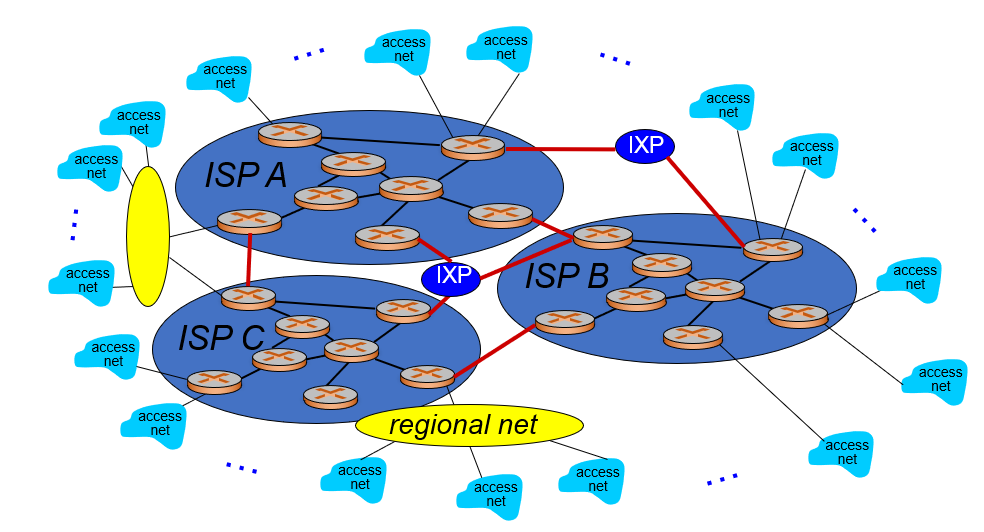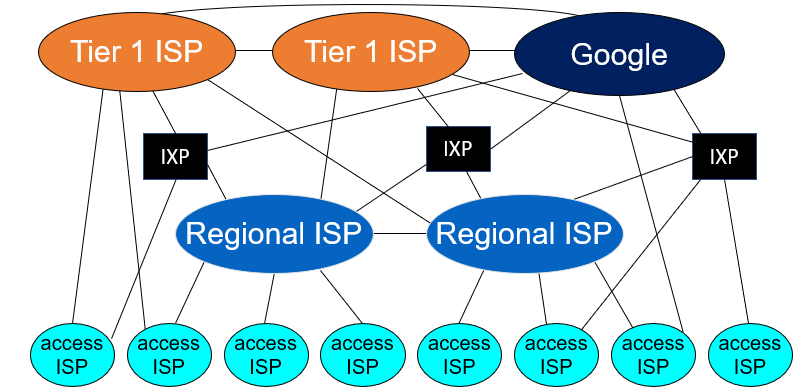-
An internet is a network of networks
-
The Internet is the one that spans the world
-
The Internet is a distributed network - don’t need to get permission from a controller to become part of a network
-
What is the internet? A service view: - It’s an infrastructure that provides services to applications: web, VoIP, email, social nets, etc. - Provides programming interface to apps:
-
Hooks that allow sending and receiving app programs to “connect” to Internet
-
Provides service options, analogous to postal service
-
All communication activity on the Internet is governed by protocols
Internet structure: network of networks
- End systems connect to Internet via access ISPs
- Access ISPs in turn must be interconnected so that any two hosts can send packets to each other
- Can’t connect every ISP to every other ISP, so instead have global transit ISPs
- Customer and provider ISPs have economic agreements
- These global ISPs are interconnected

On top of that, there are are regional networks to connect access nets to ISPs

On top of that, content provider networks such as Google and Microsoft may run their own networks to bring services and content closer to end users

At the center are a few well-connected large networks
- Tier-1 commercial ISPs (e.g. Spring, AT&T), national and international coverage
- Content provider/distribution network (e.g. Google, Akamai): private network that connects its data centers to Internet, often bypassing tier-1 regional ISPs